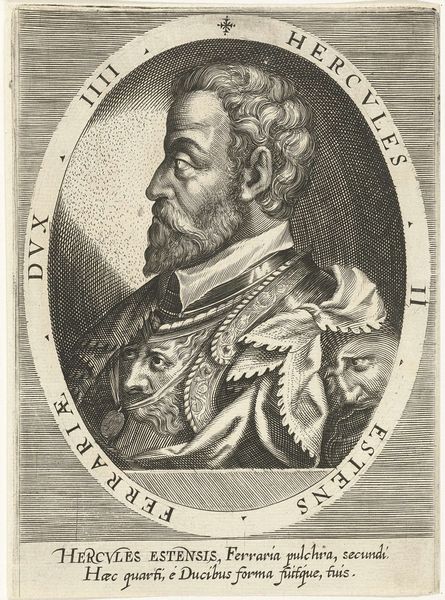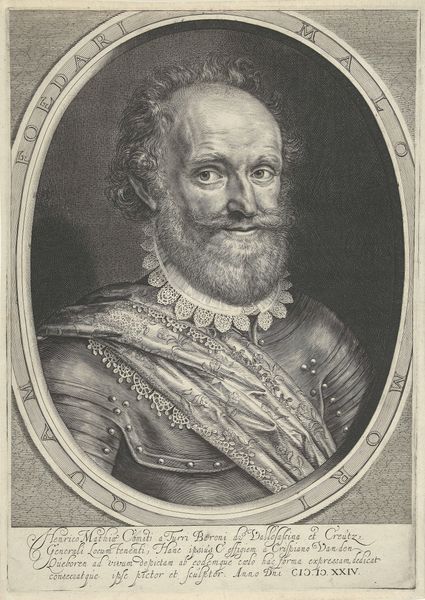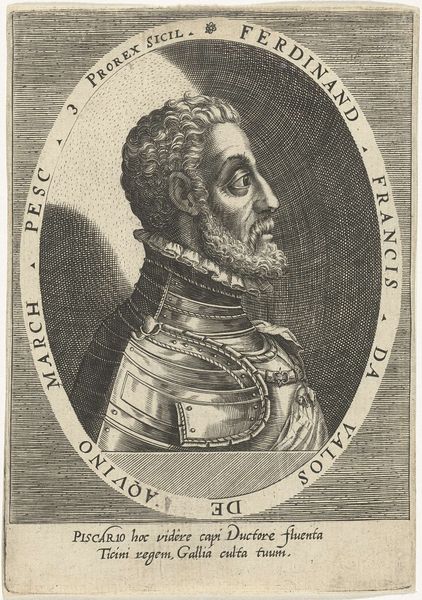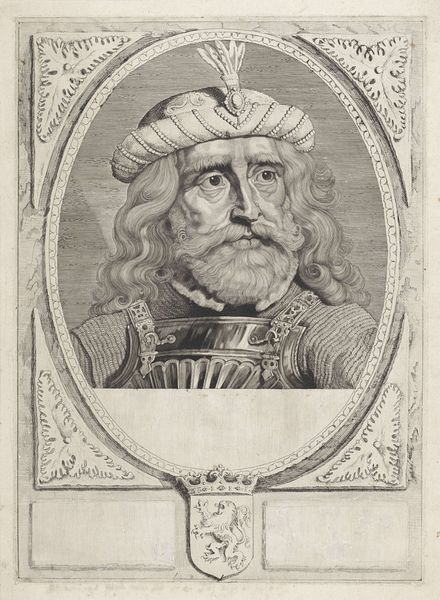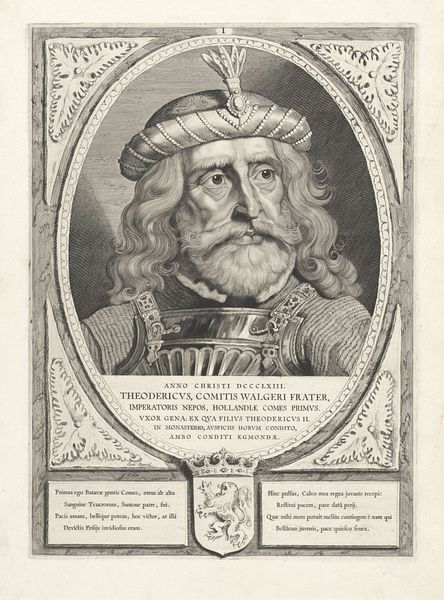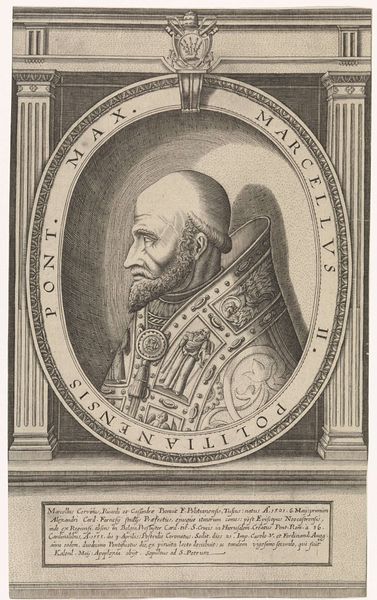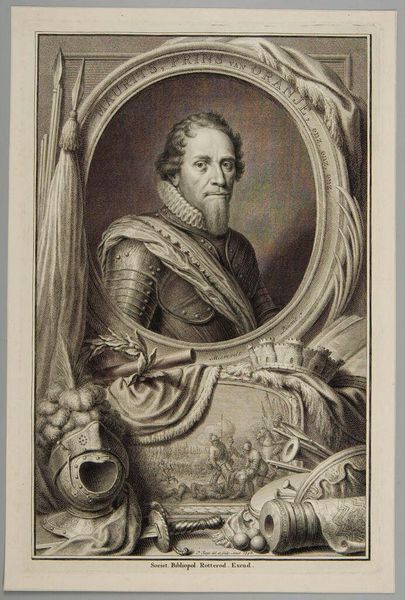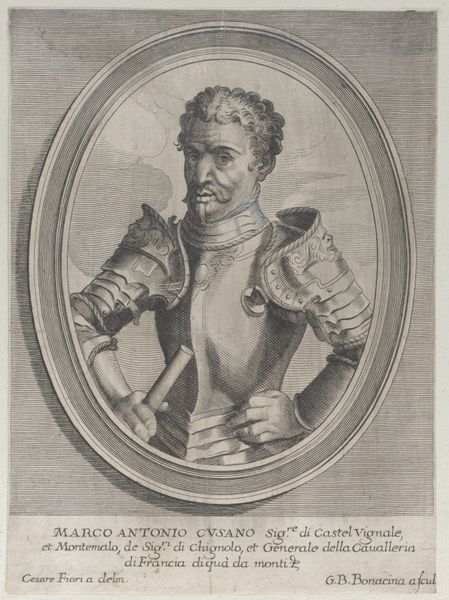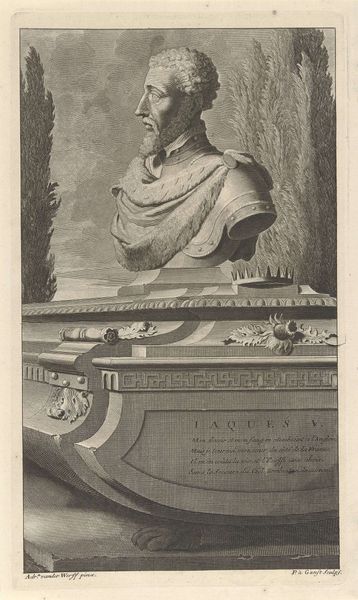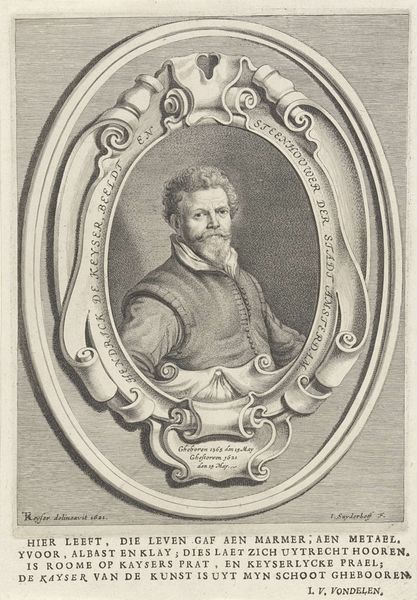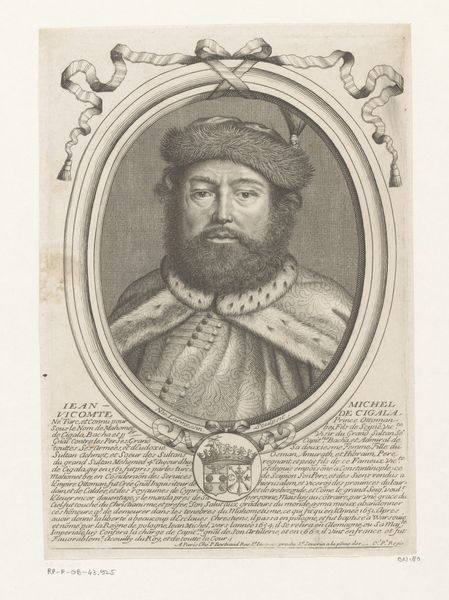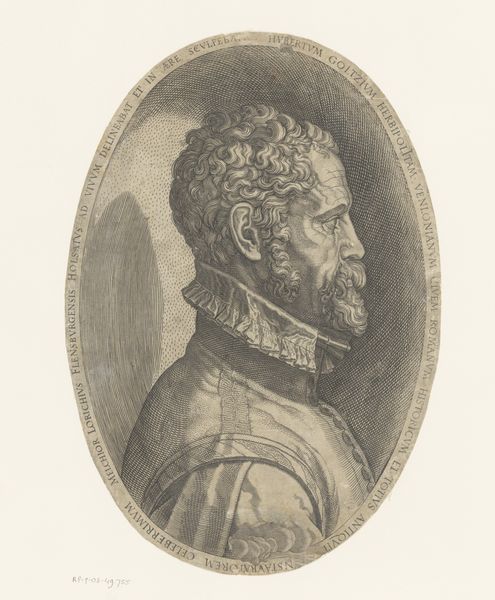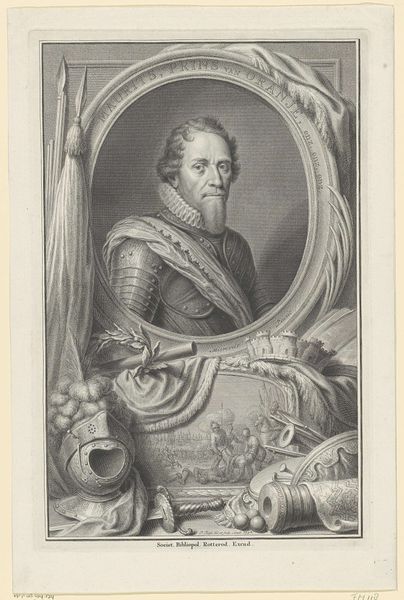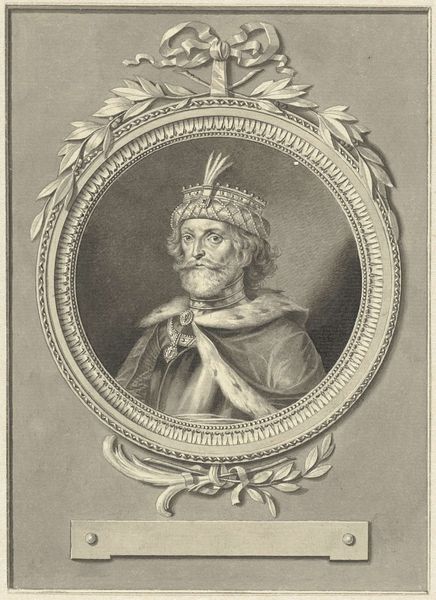
Henry IV, King of France (b. 1553, r. 1589–1610) 1600 - 1615
0:00
0:00
metal, bronze, sculpture
#
portrait
#
medal
#
metal
#
sculpture
#
bronze
#
11_renaissance
#
sculpture
#
history-painting
#
decorative-art
Dimensions: 7 x 5 1/2 in. (178 x 140 cm)
Copyright: Public Domain
Editor: Here we have a bronze relief sculpture, "Henry IV, King of France" made between 1600 and 1615 by Guillaume Dupré. The king's expression looks somewhat melancholy, in contrast to the powerful armour and ornate ruff. What do you see when you look at this piece? Curator: I see a carefully constructed image designed to project power and legitimacy during a turbulent period. Henry IV, despite bringing a degree of stability to France after years of religious wars, was always somewhat vulnerable, particularly as a converted Catholic. This medal serves a function; it is an intentional projection. Editor: So it’s about how Henry wanted to be *seen*, not necessarily a reflection of his inner self? Curator: Exactly. The medal format itself is significant. Medals were often distributed as diplomatic gifts or kept as personal mementos, thereby broadcasting his image and authority. And note the date. Why might Dupré still be making portraits of Henry IV well after the king’s death in 1610? Editor: Maybe to cement his legacy? Remind people of the stability he brought? Curator: Precisely! This medal speaks to the ongoing need to legitimize his reign, even posthumously. His policies, particularly those promoting religious tolerance, faced constant challenges. This object would be instrumental to public sentiment at the time. What did this discussion reveal to you? Editor: That artwork like this can be less about the individual and more about their role in a specific social and political context. Curator: Indeed. It serves as a powerful reminder of the complex relationship between art, power, and public image.
Comments
No comments
Be the first to comment and join the conversation on the ultimate creative platform.
